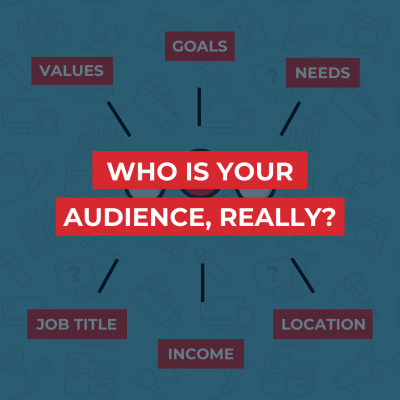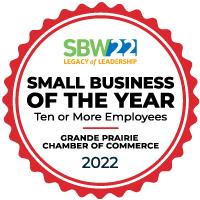A customer calls us, interested in our services. We invite them in to meet with us to discuss their project in more detail. The meeting is fantastic. After an hour of talking about their project and ideas, showing them some of the things we can do, and having a few side-tracked laughs together, we shake hands, and agree to send them a proposal for their project. We quickly get to work preparing a detailed proposal outlining how we are going to solve their problems with our products and services. We send out the proposal, looking forward to a positive response.
A couple of days later, we get an upset email from the client. They are disappointed—offended—that we did not include any samples of how their final product will look in our proposal, and because of this, they will not be moving forward with the project.
Of course, at this point we were a bit stunned. Nowhere in the meeting was the expectation raised for us to create samples along with our proposal. It was simply assumed by the client that we would create the ideas for them along with the proposal.
It’s not the first time we have been asked to create work for a client before they commit to paying for it. “Can you create a few samples for us to look at, and if we like them we will use you?” is a statement we occasionally hear. “Our boss is a very powerful and important person in the community, and expects to see the work before he pays for it. It’s just how he does business,” is another version of the same thing.
And of course, our answer to all of the above was no, along with a polite explanation of the reasons why.
The practice we are describing is commonly referred to as “spec work”, or work that is completed on speculation that the client will hire you afterward. This video explains the concept and the problem pretty well:
Like the name implies, it’s a gamble—and it’s just as bad for the client as it is for the designer. Here are some reasons why:
1. Creative ideas are the product
When you go to a creative professional for design work, you are not just buying their skill at manipulating images on a computer, you are also paying them for their creative ideas and insights. After all, if you had the ideas, why would you bother going to a creative professional in the first place?
2. It’s unethical
Asking a designer to create work without any promise of being paid is like ordering a steak dinner at a restaurant but telling the waiter you’ll only pay for it if you end up liking it. Would you do that? Do you think the restaurant would agree to it? And if you didn’t like it, how does the restaurant take back the time, effort and skill it took to prepare the meal (not to mention the materials?)
Once you understand that a designer’s ideas are the biggest part of the product they sell—not just the business cards those ideas are printed on—you will realize that asking to receive those ideas up front is unethical.
3. It leads to crappy ideas
A designer who is creating work without any hope of getting paid isn’t going to put the kind of time, attention and care that they would on a paying project for an invested client. It also doesn’t allow a designer to properly research the idea, industry or situation, which means that whatever they create will likely not be a good design. As designers, our goal is to improve the world with better design, and spec work doesn’t allow us to do that. It is a disservice to your own company as much as it is to the designer.
4. It can lead to theft of ideas by both the designer and the client
In the interests of saving time or getting the sale, a less scrupulous designer may submit a design they did not create as a sample. It may be a stock website template or logo design, or even another designer’s work. You would not have the right to use the image even if you ended up paying for it.
The other risk is that you hire the designer based on the sample, and soon realize that the work they are producing for you is nowhere near the skill and quality displayed in the sample.
On the flip-side, designers risk having their ideas and designs stolen by the client. This is not something a designer is very excited about having happen to them.
5. It can damage your relationship with a designer
As a general rule, designers disapprove of spec work. Many designers are quite passionately objected to it. In addition, virtually every professional association or organization representing Graphic Designers frowns upon and outright disapproves the practice. If you are approaching a designer that you really want to work with, respect the value of their time and expertise and don’t ask them to work on spec.
6. It can damage your reputation as a client
Designers and agencies talk. They belong to professional organizations and often collaborate or refer work each other’s way. Putting your name behind a speculative RFP or design contest can leave a black mark on your reputation as a client. Then one day, when you have real paying work, you may find it harder than usual to get a good designer to help you. Any designer is cautious of the precedent you set when you tell the design community you’d like them to work for free.
7. Without trust, there is nothing.
When a client asks for spec work it really says something much bigger: I don’t trust you. Whether they don’t trust in the designer’s skill or the designer’s ability to deliver on their promises, the fact is that it’s impossible to have a relationship when there is no trust.
In some cases, the client’s fear can be reasonable. The client may have worked with several designers who all got it wrong and they are scared of being taken advantage of. In this situation, the client’s trust must be earned, and it is reasonable for the client to be cautious. But it still doesn’t justify asking for work on spec. Instead, carefully evaluate the designer’s portfolio, ask for references, and insist on a contract.
Another possibility is the the designer doesn’t have a portfolio or any good credibility indicators like testimonials or references. If the project is pretty important, it may then be wise to ask if it’s safer to go with someone more established.
But telling a reputable designer who has a solid body of work along with testimonials and references that you don’t trust in their abilities is probably not the best way to start a great working relationship with them.
Hey, what about Mad Men? They show ideas in their pitch!
Big advertising agencies generally don’t make their money on design. They make it on selling ad space for a commission. The commission may vary, but typically it may be 5-15% of the total advertising budget. And for those agencies, the client’s budget is usually in the millions. For that kind of commission, you can have all the creative you damn well please!
Design agencies, as a general rule, do not make money from the commissions of selling ads, and that is why they can’t afford to bring their best ideas to the sales meeting.
So without seeing samples… how do I know they can do the job?
Do your homework!
1. Look at their portfolio
- Does it represent the quality and style that you are looking for?
- Are the pieces of a consistent level of quality?
- Do they either have expertise in your industry, or does their portfolio display enough diversity and range to reasonably say they can also help you?
2. Look for testimonials.
- Do people say good things about the designer?
- How many testimonials do they have?
- Are the testimonials from people who have projects displayed in the portfolio?
3. Look up the company.
- Are they incorporated? Check the registry.
- Are they in the phone book?
- Are they members of a Chamber of Commerce or other business association?
- Do they have a website?
- How long have they been in business?
- Do they have an office?
- Do they have staff?
- Do they support community organizations?
- Does anybody you know work with them?
- What do people say about them in the community?
4. Interview them.
- Visit their office. Sit and talk with them.
- Do they seem genuinely interested and helpful? Is there a good vibe?
5. Be smart
- Make sure there’s a contract.
- Ask about rules for extra charges.
- Ask about credit and payment terms.
- Ask for references if needed.
If most or all of these things are in place, you should have a reasonable expectation that the company will deliver on its promises. Of course, only you can decide what you are comfortable with, and if your gut still tells you “no”, then maybe it’s best to listen to it. But in either case, avoid asking for spec work. If you don’t trust the company, don’t do business with them.










